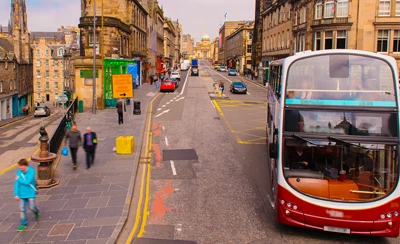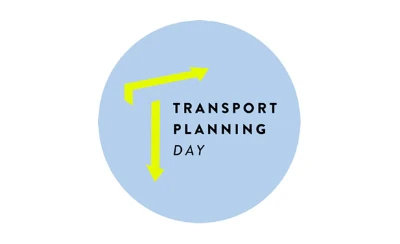Summary:
Lucy Marstrand-Taussig
Technical Lead for Walking and Cycling, Metis Consultants.
Co-chair of the ICE Walking and Cycling Community of Practice
The Equality Act needs to underpin what we design and build in highways.
Making ‘inclusion’ more inclusive: how the Equality Act should drive what we measure, research and design.
The public sector equality duty created by the Equality Act 2010 places legal duties on local authorities to advance equal access to services and opportunities to all those with protected characteristics. However, the term ‘inclusive design’ tends to conjure up an image of someone who is disabled rather than someone with one of the other protected characteristics: a pregnant woman, an older person, a child. The Department for Transport’s 2018 ‘Inclusive Transport Strategy’ focusses on access for the disabled as does their Inclusive Transport Leaders scheme initiative.
Yet non-disabled protected groups make up a large proportion of society. Perhaps because they are not a minority, we forget their travel needs may be specific. Women in their thirties, for example, do four times the distance of escorting education trips and half the distance of commuting trips compared with men of the same age. For children aged 0-16 ‘visiting friends’ is the most significant trip in terms of distance while going to school is the most frequent trip type. Many of their trips are short and could be walked or cycled if road environments were made suitable.
"Commute" think
The commute is only 15% of trips made in England (2019 data, Department for Transport, NTS0611). Or at least it was. With homeworking now more common due to COVID, the commute – unlike travel to school - is a diminishing proportion of trips.
Whether measured in distance or trip numbers the commute is not the most significant trip for females or many of those with protected characteristics. Yet transport planning and highways engineering have long been (and remain) focussed on the commute.
In London, for example, the quality and coherence of the cycle network improves as you move into the centre, while safe cycle routes are few and far between in many outer London boroughs[1].

Figure 1: Commuters benefitting from well-designed protected cycle routes in central London. Photo: Lucy Marstrand
Research suggests that to achieve greater diversity in cycling, we need to think beyond the commute; “making neighbourhoods cycling friendly and developing safer routes to school, should be equally high on the agenda as cycling corridors that often cater to commuting traffic”[2].
The quickest, cheapest way to enable cycling for short trips in neighbourhoods is by removing through traffic (see Figure 2). But borough commitment to reducing traffic varies enormously from one borough to another. Some boroughs are planning traffic neighbourhoods across their whole area, others have no boroughwide plan or programme at all.
This is an equality issue. Those groups who make more local trips - women, children, and older people - stand to benefit most from being able to use local roads for walking and cycling.

Figure 2: Inclusive, filtered streets created by removing through traffic. Southwark, June 2021. Photo: Lucy Marstrand
Planning transport for children
Perhaps our commute obsession is not surprising; much of the best data collected relates to the commute. (Though it is probably a chicken and egg situation with commute-think shaping what we measure which in turn determines what we fund and build).
But if we want transport infrastructure that provides for all, we need to start measuring and planning for trips to the shops, to school, to the park.
Children’s freedom of movement has been dramatically eroded over the past half century and is negatively correlated with adult’s increased ‘freedom’ to drive – see Figure 3.

Figure 3: Passenger transport by car, van, and taxi and percentage of children travelling to primary school alone.
Sources: Transport Statistics of Great Britain, NTS, 2014, 2013 [NTS0616]. Hillman, M., Adams, J., and Whitelegg, J1990. One false move. London: Policy Studies Institute.
Parent’s reluctance to allow children to travel alone in the face of prevalent car use is understandable. Over three quarters of injury deaths for 10–18-year-olds are related to motor traffic[3]and motor traffic injuries are the leading cause of death for children aged 5-14 years[4][5].
‘Inclusive’ design guidance tends to focus on the physical barriers which prevent accessibility (steps, railings, kerbs and so on). But for children (and others) the main barrier to movement – motor traffic – is virtually omnipresent.
Restraining traffic is therefore critical, not only for injury-prevention, health, and climate reasons, but also to liberate children.
Accelerating Change
National progress with the equity agenda is likely to arrive in the form of targets to cut emissions from transport, changes to the Highway Code and the re-drafting of Manual for Streets which provide an opportunity to put children back in the picture, protect them better from adult drivers, and place their needs at the heart of highways design. The potential gains are massive; 1.8% of children cycle to school but around 50% of primary school children say they would like to.
We must start building for pedestrian and cycle traffic and cutting motor traffic at a pace and scale not yet seen. Over the last 20 years cycle use in the UK has hovered at less than 2% of all trips. In London cycling mode share was 1.2% in 2000 rising to 2.4% in 2019[6]. If cycling levels continue to rise at that rate, it will take over 500 years to reach the levels of cycling now seen in cities such as Amsterdam (where cycling mode share is 36%[7]).
We must accelerate the pace of change to meet the climate and health crises, but also to meet our moral obligations to children and others we are supposed to be protecting. Streets which work for children works for all.
This article will be published in full in Local Transport Today at the end of June 2021
[1]https://www.transportxtra.com/publications/local-transport-today/news/66655/strategic-planning-must-focus-more-on-secondary-school-trips/
[2]Goel, R., Goodman, A., Aldred, R., Nakamura, R., Tatah, L., Garcia, L.M.T., Diomedi-Zapata, B., de Sa, T.H., Tiwari, G., de Nazelle, A. and Tainio, M., 2021. Cycling behaviour in 17 countries across 6 continents: levels of cycling, who cycles, for what purpose, and how far?. Transport Reviews, pp.1-24.
[3]https://www.rcpch.ac.uk/resources/why-children-die-research-recommendations
[4]J., Read. I-walk innovations, 2020
[5]Racioppi, F., Eriksson, L., Tingvall, C., Villaveces, A. and World Health Organization, 2004. Preventing road traffic injury: a public health perspective for Europe (No. EUR/04/5046197). Copenhagen: WHO Regional Office for Europe.
[6]Travel in London Report 13, 2020, page 56
[7]https://www.linkedin.com/pulse/amsterdam-city-powered-cycling-civitas-handshake/








